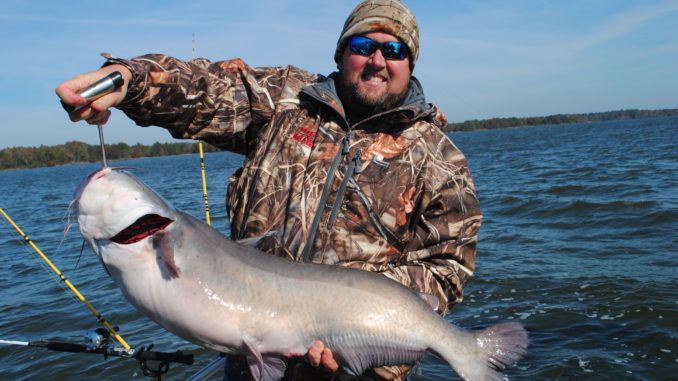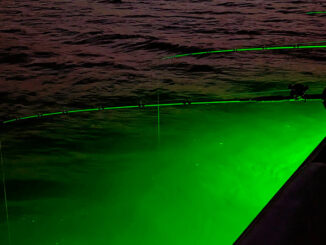
Sunset clause wipes out regs approved in 2014
The 2014 Santee Cooper blue catfish law that took effect on April 1, 2015, with creel and size limits designed to protect the resource, has been repealed because of an undiscovered “sunset” clause place in the bill by the S.C. General Assembly.
Regulations managing blue catfish on the Santee Cooper lakes’ system have reverted to regulations crafted in 2007 that including no daily creel limit and allowed only one catfish per day longer than 36 inches to be kept.
According to Ross Self, chief of fisheries for the S.C. Department of Natural Resources, the package submitted to the legislature in 2014 called for a study and recommendation to be completed and submitted to the legislature by 2020.
“The bill was amended on the floor toward the end of the 2014 session,” Self said. “That amendment added a section to the act that called for the sunset of the new limits at the end of June 2018 unless action was taken to extend the limits. We failed to recognize this addition had been made. We were focused on the 2020 reporting requirement.”
“The end result is that the 2014 law that stipulated a creel limit of 25 blue catfish with only two in excess of 32 inches has now reverted back to the previous bill passed by the legislature, a 2007 law that has no creel limit and only one catfish over 36 inches can be kept.”
Self said that until new legislation is passed, regulations will be those from 2007. He said SCDNR’s enforcement division has been made aware of the situation.
Chad Holbrook, an SCDNR biologist who oversees the Santee Cooper system, said the SCDNR and Santee Cooper Country, a major proponent of the 2014 bill, have met and outlined a course of action.
“Our original focus from the 2014 law was to have a five-year study which would be enough to prepare a comprehensive study and biologically backed recommendations going forward,” Holbrook said. “But given the circumstances, we will take the three years of data we have and prepare a report with recommendations to be presented when the legislature convenes. Based on the current data, the hope is the 2014 law will reinstated in 2019.”
“At that point, we’ll have three years of data and can make a sound biologically based recommendation on the creel and size limits needed to maintain the fishery at a high level,” he said. “We’re seeing a high-level balance now, and that’s why we hope to see the 2014 law re-instated in 2019.”
Holbrook said existing data already indicates the 2014 law’s creel limit and size restriction have had a positive impact on the fishery. And, his real-life discussions with local anglers indicate most believe that more blue catfish are now available as well as significantly larger sizes.
“The system seems to be generating more trophy sized catfish now, and the numbers of catfish are actually up, based on strong, recent recruitment years,” he said.
Holbrook said it is important to manage the fishery with creel and size restrictions, but not excessively. Utilization of the blue catfish resource to the right extent is actually necessary to maintain a proper balance.
“We think the creel limit of 25 accomplishes what the resource needs, while allowing fishermen to keep plenty of catfish,” he said.”With too-restrictive creel and size limits, we could have problems with too many small catfish in the system, thus not maintaining a balanced fishery.”
The 2014 law has been widely acclaimed by catfish anglers, guides and business owners around the Santee Cooper lakes as instrumental in the rapid restoration of the blue catfish fishery to a world-class trophy catfish fishery.





Be the first to comment